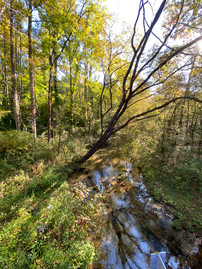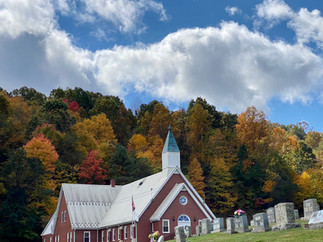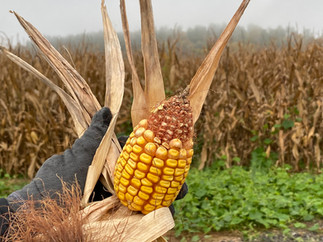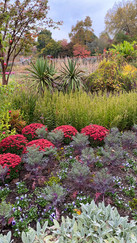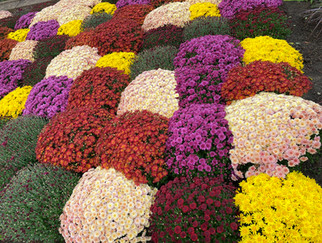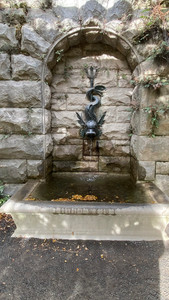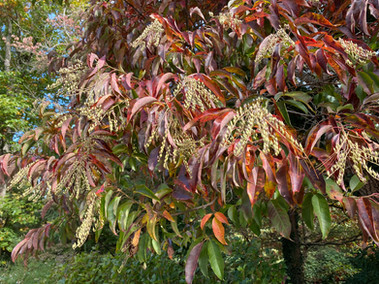MY LIFE WITH PLANTS - Carolina Color Fall Foliage
- Jim Bishop
- Nov 1, 2022
- 3 min read
Updated: Dec 1, 2022
By Jim Bishop for Let's Talk Plants! November 2022.
This past October, Scott and I headed to the Carolinas' Blue Ridge Mountains to see the fabulous fall foliage on a bicycling tour hosted by Backroads. To be able to enjoy the long rides and big hills we opted to use e-bikes with pedal assist. Depending on the level of boost you choose they can almost make the hills feel flat. We were hoping to see some great fall foliage color and we weren’t disappointed.

The Blue Ridge Mountains are part of the Appalachian Mountains that run from Georgia to Pennsylvania. The blue haze coloration, which was barely noticeable on our trip, comes from organic isoprene emitted from the trees covering the mountains.

The lower elevations are dominated by oaks. Higher up, tulip poplars, pines and chestnuts are present. At the highest elevations are evergreen spruce trees. Understory plants noted on our visit were evergreen Rhododendrons, asters, miscanthus, and goldenrod.
The ride started in outdoorsy Greenville, South Carolina, and ended in artsy Asheville, North Carolina. Most of the way we'd be cycling through the hills and small towns of the Blue Ridge Mountains.

We had part of a day to spend in downtown Greenville. Over the past few years, they've made a lot of investment in the area surrounding the Reedy River that runs through the center of town. The river cascades down a series of rocky slopes creating small waterfalls and ponds. Walkways, bridges, restaurants and hotels line both sides of the river. Lots of southerners were in town to enjoy the wonderful cool fall weather and the changing foliage.


Day one was spent cycling through South Carolina up into the Blue Ridge Mountains. The first part of the tour was along the Swamp Rabbit bike trail out of Greenville. It followed the Reedy River part of the way and went past the bell tower at Furman University. A common joke in the area was that the sports team was originally going to be named the Furman University Christian Knights, which was rejected for some reason.

We ended our day at the Hotel Domestique where we would spend two nights. The hotel was built by cyclist George Hincapie and loosely modeled after a French chateau.
The next day was a loop ride through the hills past several lakes and back to the hotel.







Day three we headed for higher country and into the clouds, cycling to Caesars Head at 3208 feet. Well, actually, Scott cycled. I took the van part of the way up. After crossing into higher country the fall colors became more intense.







At dinner that night, a bluegrass band treated us to some local music.
Day four of the tour continued through the mountains and was the most colorful day of cycling...in spite of some rain we encountered at higher elevations.



On the next to the last day of the tour we had a quick self-guided tour of the interior of Biltmore Estate.

The next day we did a short ride around the grounds of Biltmore and stopped to enjoy the gardens and plants in the conservatory. This was my favorite part of the estate.
Information signs about the garden.
Video of plants in the conservatory:
Some of the plants, scenes, and views of the gardens and other areas of the Biltmore grounds:
After the cycling tour, we rented a car in Asheville. Unfortunately, they only had 2 vehicles available: a pickup truck - which wouldn't work with luggage and frequent stops - and a black Dodge Charger with Louisiana plates which we opted for. With our muscle sports car, we got to act out Dukes of Hazard fantasies while driving through the South. Unlike some of the cycling days, the skies were clear bringing brighter colors to fall foliage. The morning drive along the Blue Ridge Parkway was leisurely with light traffic and frequent stops.
After a lunch stop at a small brewery on the main street of Sylvia, North Carolina, we crossed into Tennessee and the Great Smoky Mountains National Park. Being peak fall color and a weekend, the roads were very crowded. At many of the roadside stops there was no parking available. We stopped where we could and waited for 1/2 hour at Clingman's dome to get a parking space and did the very crowded walk to the observation deck at the top.
Way back in August of 1978, I visited the Great Smoky National Park with my mother on a road trip to visit her mother and sister in Columbus Ohio.
L: 2022 photo after a fire. R: Me at same site in1978









